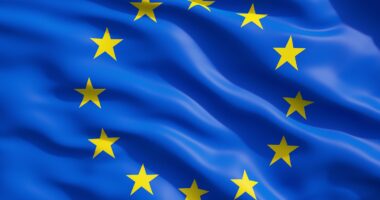IMS Offers a Subdued Outlook for the Global Pharmaceutical Industry at DCAT Week ’14
A move to value-based outcomes in drug development, increased penetration of specialty drugs, and the continued rise of emerging markets are key trends shaping the global pharmaceutical market.
The outlook for the global pharmaceutical market is marked by greater cost pressures and a higher bar for product innovation that reflects an increased demand for value from both regulators and payers. Weak growth in developed markets, the continued rise of emerging markets, and a shift to specialty medicines are forecast to be significant outcomes over the next five years. These trends, as outlined by Graham Lewis, vice-president of global pharma strategy for IMS Health, who spoke at DCAT’s educational program, PharmaChem Outlook: Pipelines, Products, Restructuring Data, Market Trends and the Impact upon Pharma Innovation, held during DCAT Week ’14, have important strategic implications for pharmaceutical companies and their suppliers.
 |
| Graham Lewis Vice-President Global Pharma Strategy IMS Health |
Crunching the numbers
IMS projects that the global pharmaceutical market (ex manufacturer prices, not including rebates and discounts) will reach between $1.135 trillion and $1.235 trillion by 2017 (see Figure 1). The United States will hold the number one position with a 31% market share. If traditional Chinese medicines are considered, China will move into the number two spot with a 15% share followed by Japan with a 9% share. If traditional Chinese medicines are excluded, Japan will retain the number two spot. The pharmaceutical markets of the EU5 (France, Germany, Italy, Spain, and United Kingdom) collectively are projected to hold a 13% share, and the pharmaceutical markets of Brazil, Russia, and India will collectively hold 8%. Tier 3 Pharmerging countries (defined by IMS as Algeria, Argentina, Colombia, Egypt, Indonesia, Mexico, Nigeria, Pakistan, Poland, Romania, Saudi Arabia, South Africa, Thailand, Turkey, Ukraine, Venezuela, and Vietnam) are projected to hold a 10% share by 2017.
|
Figure 1: Global Pharmaceutical Market, Regional Market Share Forecast, 2017* |
 |
|
*Based at ex-manufacturer price levels, not including rebates and discounts. Contains audited and unaudited date. All compound annual growth rates (CAGR) based on five years.
Pharmerging countries include: Algeria, Argentina, Colombia, Egypt, Indonesia, Mexico, Nigeria, Pakistan, Poland, Romania, Saudi Arabia, South Africa, Thailand, Turkey, Ukraine, Venezuela, and Vietnam Source: IMS Market Prognosis, Sept. 2013. |
IMS projects a compound annual growth rate (CAGR) for the global pharmaceutical market of 3-6% in the forecast period of 2013-2017. The US pharmaceutical market is projected to grow at 1-4%. In Europe, the pharmaceutical markets of the EU5 are projected to experience a CAGR of 0-3%, and the rest of Europe is projected to have a CAGR of (-1%) to 2%. Emerging markets, although projected to see strong growth, will show slower growth than in the previous forecast period. IMS projects China’s pharmaceutical market will experience a CAGR of 13-16% between 2013-2017 compared to a CAGR of 22% during 2008-2012. IMS forecasts that the pharmaceutical markets of Brazil, India, and Russia are projected to see a CAGR of 10-13% between 2013-2017 compared to a CAGR of 16% during 2008-2012. Tier 3 pharmerging markets are forecast to have pharmaceutical industry growth of 6-9% between 2013-2017 compared to a CAGR of 9% during 2008-2012. Note for purposes of reporting, CAGR forecasts are reported in constant dollars, and historical CAGR in actual dollars.
The influence of emerging markets in pharmaceutical industry growth is evident by several key projections offered by IMS. By 2017, 50% of drugs by volume are forecast to be in pharmerging markets, and the US and Europe each respectively will account for only 13% of pharmaceutical volume by 2017. Led by China, the BRIC countries (Brazil, Russia, India, and China) will account for 70% of all pharmerging market sales by 2017 on a value basis and strategically will continue to be the important engines of growth among emerging markets. Pharmaceutical sales in China are expected to reach $167 billion by 2017, $49 billion in Brazil, $24 billion in India, and $27 billion in Russia, according to IMS.
Although BRIC countries will dominate emerging-market sales, Tier 3 pharmerging countries will contribute to pharmaceutical industry growth (see Figure 2) as will the so-called “frontier countries” through 2017 (see Figure 3). These frontier countries include: in Asia Pacific, the Philippines, Malaysia, and Bangladesh; in Latin America, Chile, Peru, and Ecuador; in Eastern Europe, Kazakhstan; in the Middle East, Iran, United Arab Emirates, and Lebanon; and in Africa, Morocco, Tunisia, Ghana, Kenya, and Ethiopia.
|
Figure 2: Pharmerging Tier 3 Markets: Income Levels, Growth Rates, and Healthcare Sophistication |
|
 |
 |
| *Includes the following countries: Argentina, Colombia, Mexico, Poland, Romania, Saudi Arabia, Turkey, and Venezuela | *Includes the following countries: Algeria, Egypt, Indonesia, Nigeria, Pakistan, South Africa, Thailand, Ukraine, and Vietnam |
|
M is million, T is trillion, k, is thousand, Bn is billion, GDP is gross domestic product, and CAGR is compound annual growth rate. Source: IMS Health Market Prognosis, Sept. 2013, at ex-manufacturer price levels. Contains audited and unaudited data, World Bank, Values 2012 unless otherwise noted |
|
| Figure 3: Frontier Countries’ Pharmaceutical Sales and Growth Prospects
|
 |
| *CAGR is compound annual growth rate. Bn is billion. Source: IMS Health Market Prognosis, March 2013, at ex-manufacturer price levels. |
Lewis pointed out that although the market of original brands (on and off-patent) will continue to be dominated by developed countries, two pharmerging countries, will reach the top ten by 2017. The US will account for 40% of original brand sales in 2017, the EU5 16%, and Japan 13%, according to IMS. China will account for 4%. Brazil, Russia, and India will collectively account for 5%, and Tier 3 pharmerging countries will account for 7% according to IMS. As with overall pharmaceutical sales, sales of protected brands will see declining to flat growth in the US and EU5 through 2017, experiencing a CAGR of (-2%) to 1% and only modest growth of 0 to 3% in Japan, according to IMS data.
The US is and will continue to be the largest national pharmaceutical market, but its underlying fundamentals are mixed. On the positive side, patent expiries peaked in 2013, but the impact of health insurance reforms under the Affordable Care Act will support growth mainly in the retail sector/primary care and generics, noted Lewis. New brands contribution to spending will increase slightly to $10 billion to $12 billion per year as the number of approvals increases. New product approvals will mainly support specialist-care growth driven partly by FDA priority and breakthrough reviews.
In other developed markets, Europe faces flat to nominal growth, and Lewis outlined three possible scenarios based on the extent of economic recovery in Europe. In Japan, the penetration of generics is increasing while at the same time the environment for innovative products is quite positive, noted Lewis.
On a therapeutic class level, the product mix for developed and pharmerging markets will differ. In developed markets, IMS projects that oncology medicines will be the largest therapeutic class with an estimated market size of $74 billion to $84 billion by 2017, followed by diabetes medicines at $34 billion to $39 billion, anti-TNF medicines at $32 billion to $37 billion. For the pharmerging markets, drugs to treat pain will be the leading therapeutic class at $22 billion to $25 billion, followed by other central nervous central drugs at $20 billion to $23 billion, antibiotics at $18 billion to $21 billion, and oncology drugs at $17 billion to $20 billion.
Another key trend noted by Lewis is the rising importance of specialty products in the overall pharmaceutical market. IMS defines specialty products as medicines that treat specific, complex chronic diseases with four or more of the following attributes: initiated only by a specialist; require special handling and administration; unique distribution; high cost; warrants intensive patient care; and might require reimbursement. In 2003, specialty drugs accounted for only 14% of the global pharmaceutical market, and in 2013, they accounted for 23% of the global market and 40% of US pharmaceutical sales, according to IMS. Between one-half and two-thirds of the pharmaceutical industry pipeline at different stages are specialist driven, and approximately one-third of the industry pipeline at all stages are biologics, according to IMS.
Laying out the strategy
Lewis outlined several strategic considerations for pharmaceutical companies in responding to the near-term outlook for the global pharmaceutical market “First, there is very little additional cash for medicines in developed markets, so innovation must have compelling evidence to shift budgets from other areas,” Lewis said. “Thus innovation must center on developing drugs that address unmet needs and that not merely make marginal improvements and will increasingly emphasize value-based health outcomes,”he said. “New launches still generate their sales overwhelmingly from the US, Europe, and Japan, not pharmerging countries,” Lewis said. For new chemical entities (NCEs) launches, Lewis emphasized the importance of three key markets (United States, Germany, and Japan).
Emerging markets will continue to be crucial to pharmaceutical companies’ success, but expansion into these markets needs to address pricing flexibility and investment in infrastructure as well as access and affordability.
Despite some penetration by innovator drugs in pharmerging markets, the pharmerging markets will continue to be dominated by generic drugs. In 2013, pharmerging countries accounted for 50% of the small-molecule generic drug market, and this is expected to increase to 57% by 2017. Concurrently, developed markets will see their share of the small-molecule generics market fall from 37% in 2013 to 33% in 2017. Branded generics have also made gains in select pharmerging markets.





